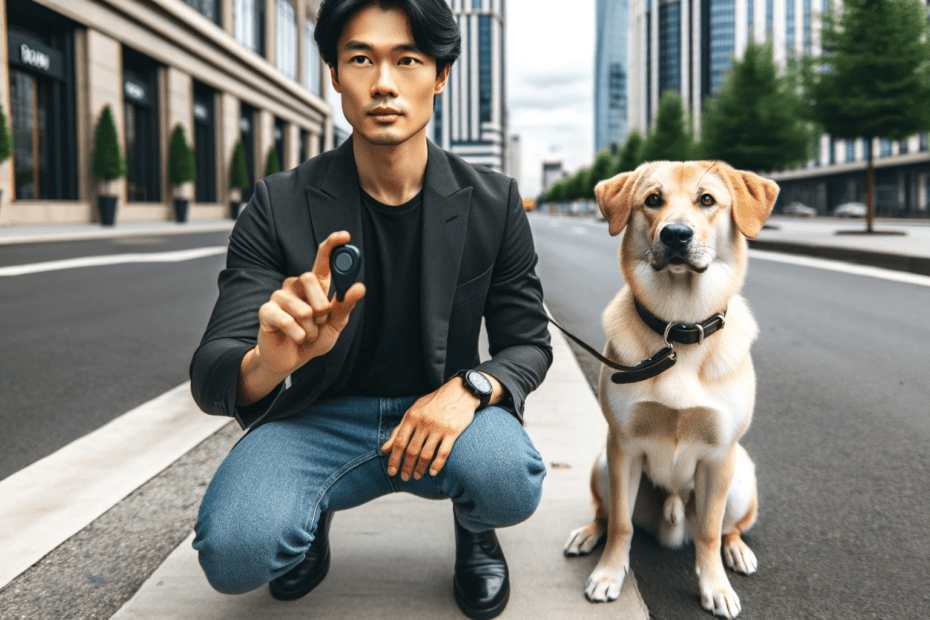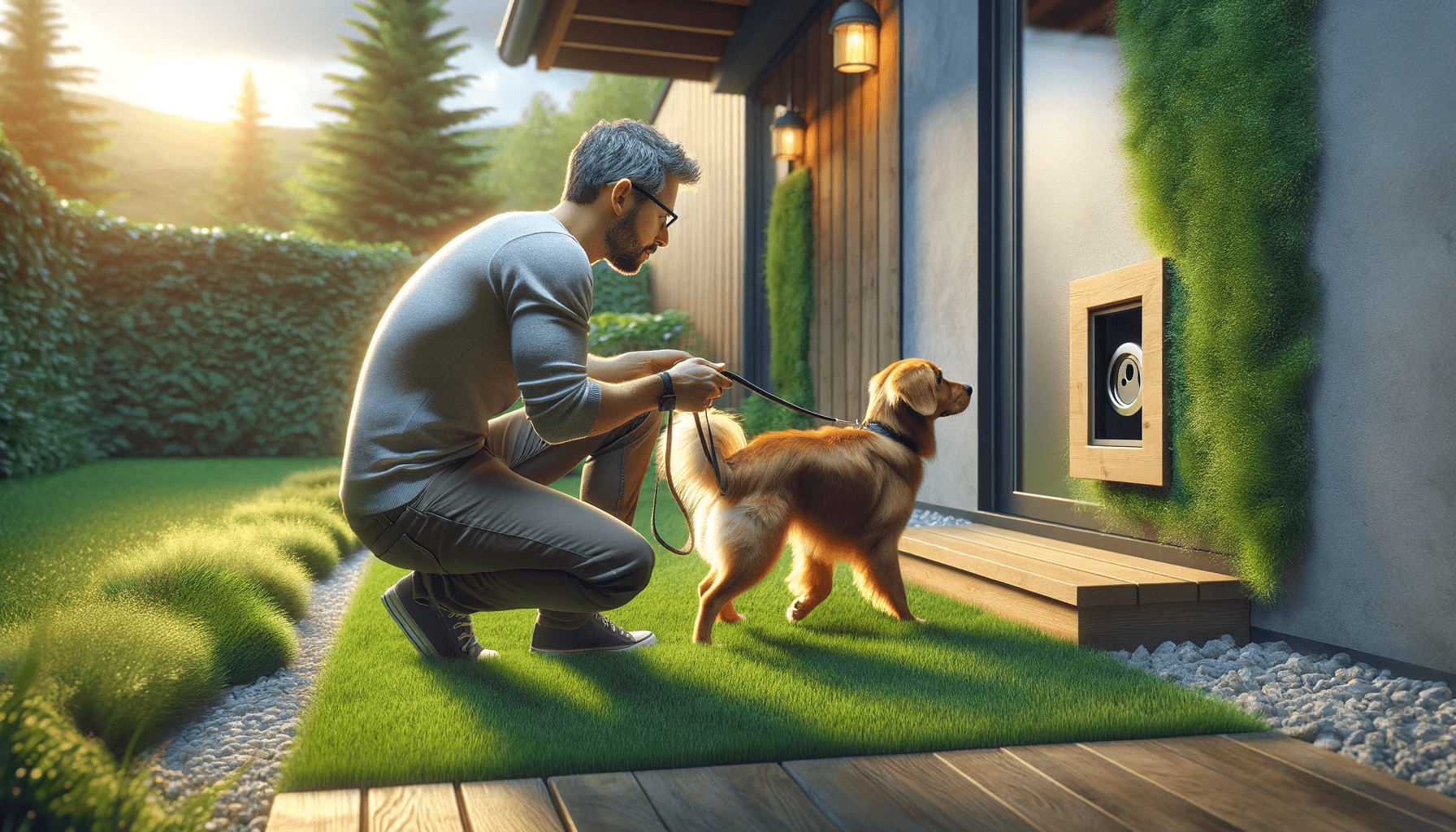Are you ready to become the master of your dog's obedience?
In this article, we'll guide you through the essential steps of mastering basic obedience training for dogs. You'll learn the importance of obedience training, basic commands to teach your furry friend, and how to establish leadership and trust.
We'll also share positive reinforcement techniques, tips for handling problem behaviors, and the necessary tools and equipment for effective training.
Get ready to unlock your dog's potential and strengthen your bond through training.
Key Takeaways
- Obedience training establishes boundaries and expectations for your dog, preventing unwanted behaviors and creating a harmonious relationship.
- Basic commands like recall, leash training, and sit are essential for establishing control and teaching appropriate behavior.
- Consistent communication, positive reinforcement, and gradually increasing distractions are key to improving reliability in training.
- Establishing leadership, trust, and positive reinforcement through clear boundaries, consistent communication, and rewards helps strengthen the bond between you and your dog.
Importance of Obedience Training
Obedience training is an essential step in ensuring a well-behaved and obedient dog. It's through this training that you establish boundaries and set clear expectations for your furry companion. By teaching your dog basic commands like sit, stay, and come, you're laying the foundation for a harmonious and cooperative relationship.
Establishing boundaries is crucial in teaching your dog appropriate behavior. Through obedience training, you can communicate to your dog what's acceptable and what's not. This helps prevent unwanted behaviors such as jumping on people, excessive barking, or chewing on furniture. By setting these boundaries early on, you can prevent future issues and create a peaceful living environment for both you and your dog.
Setting expectations is another important aspect of obedience training. Dogs thrive when they understand what's expected of them. By teaching them basic commands and consistently reinforcing them, you're providing clear guidance and structure. This helps your dog feel secure and confident in their role as your faithful companion.
Basic Commands for Dogs
To effectively train your dog, start by mastering the basic commands using clear and consistent communication. Teaching recall is an essential command that ensures your dog returns to you when called. This command is crucial for their safety and allows you to maintain control in various situations. To teach recall, start in a distraction-free environment and use positive reinforcement, such as treats or praise, when your dog comes to you. Gradually increase the distractions as your dog becomes more reliable in their response.
Another important basic command is leash training. A leash provides control and safety during walks and outings. The leash training technique involves teaching your dog to walk calmly beside you without pulling. Start by holding the leash close to your body and rewarding your dog for walking without tension. If your dog starts to pull, stop walking and wait for them to return to your side before continuing. Consistency and patience are key to successful leash training.
Lastly, the 'sit' command is a fundamental skill that every dog should learn. Teaching your dog to sit on command helps establish boundaries and allows for better control in various situations. To teach this command, hold a treat above your dog's nose and move it back over their head. As they follow the treat, their bottom will naturally lower into a sitting position. Reward them with the treat and praise. Repeat this exercise until your dog responds reliably to the 'sit' command.
Establishing Leadership and Trust
Establish a strong foundation of leadership and trust with your dog by establishing clear boundaries and consistent communication.
Dogs are pack animals and instinctively look for a leader to follow. By setting boundaries, you establish yourself as the leader and gain your dog's trust. Boundaries can include rules about where your dog is allowed to go, what behaviors are acceptable, and what's off-limits.
Consistent communication is key in establishing effective leadership. Use clear and simple commands to communicate your expectations to your dog. Reward good behavior and correct undesirable behavior promptly and consistently.
Dogs thrive on routine and consistency, so make sure to enforce the established boundaries consistently. Remember to be patient and understanding as your dog learns and adjusts to the new rules. Building trust takes time, so be consistent and fair in your interactions.
With clear boundaries and effective communication, you'll establish a strong foundation of leadership and trust with your dog.
Positive Reinforcement Techniques
To effectively train your dog, positive reinforcement techniques are key. By using rewards for good behavior, such as treats or verbal praise, you can encourage your dog to repeat desired actions. This not only helps in building a strong connection between you and your furry friend but also makes the training process more enjoyable and effective.
Rewards for Good Behavior
Reward your dog's good behavior to reinforce positive habits and encourage continued progress in their obedience training. Utilizing rewards is an effective way to motivate and communicate with your furry friend.
Here are three techniques you can use to reward your dog's good behavior:
- Clicker training benefits: Clicker training is a popular method that utilizes a small handheld device that makes a distinct clicking sound. This sound is used to mark the exact moment your dog performs the desired behavior, making it easier for them to understand what they did right.
- Using treats as rewards: Treats are a classic and effective way to reward your dog. Choose small, soft treats that your dog loves and use them as a positive reinforcement when they exhibit the desired behavior. Make sure to give the treat immediately after the behavior to reinforce the connection.
- Verbal praise and petting: Dogs thrive on positive attention from their owners. Verbal praise and gentle petting are simple yet powerful ways to reward good behavior. Use a cheerful tone of voice and provide affectionate touch to make your dog feel loved and appreciated.
Encouraging Desired Actions
To reinforce positive habits and encourage continued progress in your dog's obedience training, it's important to utilize positive reinforcement techniques that encourage desired actions. Encouraging positive behavior is crucial in maintaining a harmonious relationship with your furry friend.
One effective communication technique is using treats as rewards when your dog performs the desired action. For example, when your dog sits on command, immediately provide a treat to reinforce the behavior.
Another technique is verbal praise, such as saying 'good boy' or 'good girl' in an enthusiastic and upbeat tone. This positive reinforcement helps your dog associate the action with something pleasant, encouraging them to repeat it in the future.
Remember to be consistent in your training and reward your dog every time they display the desired behavior.
Building Strong Connections
By using positive reinforcement techniques, you can build strong connections with your dog during obedience training. Effective communication and building a bond are crucial in creating a successful training experience. Here are three important ways to achieve this:
- Rewards: Use treats, praise, and affection to reward your dog for desired behaviors. This positive reinforcement will strengthen the bond between you and your furry friend.
- Consistency: Be consistent in your commands, expectations, and rewards. Dogs thrive on routine, so maintaining a consistent training approach will help them understand what's expected of them.
- Patience and Understanding: Dogs learn at their own pace, so be patient and understanding during the training process. Celebrate small victories and be supportive even when your dog makes mistakes.
Handling Problem Behaviors
Now let's address some common problem behaviors you may encounter with your dog.
Aggression towards others can be a serious issue, but with proper training and socialization, it can be managed effectively.
Excessive barking is another behavior that can be frustrating, but there are techniques you can employ to address this issue.
Lastly, we'll discuss house soiling prevention, which involves establishing a consistent routine and providing appropriate bathroom opportunities for your dog.
Aggression Towards Others
When dealing with aggression towards others, it's crucial to address the problem behavior promptly and assertively. Here are three key aggression management techniques to consider:
- Identify triggers: Observe your dog's behavior to determine what triggers their aggression. This could include certain people, animals, or situations. Once identified, you can work on desensitizing your dog to these triggers through controlled exposure and positive reinforcement.
- Seek professional help: If your dog's aggression is severe or persistent, it may be necessary to consult with a professional dog trainer or behaviorist. They can provide specialized guidance and develop a tailored training plan to address the aggression effectively.
- Implement socialization strategies: Proper socialization from a young age can help prevent aggression towards others. Expose your dog to various people, animals, and environments in a controlled and positive manner. This will help them become comfortable and confident in different situations.
Excessive Barking Solutions
To address excessive barking, you can implement effective solutions that will help you handle this problem behavior.
One option is to use anti barking devices. These devices emit sounds or vibrations that discourage barking and help your dog learn to be quiet. There are various types of anti barking devices available, such as ultrasonic devices, citronella collars, and vibration collars.
Another solution is to seek the help of professional dog trainers. Trainers have the knowledge and experience to identify the underlying cause of your dog's excessive barking and provide you with the appropriate training techniques to address it. They can teach you how to use positive reinforcement methods to reward your dog for being quiet and discourage barking.
With the right tools and guidance, you can effectively manage and reduce your dog's excessive barking.
House Soiling Prevention
To prevent house soiling and handle other problem behaviors, you can take steps to establish a consistent potty training routine for your dog. Here are three important strategies to help you in this process:
- Crate Training: Using a crate can be an effective tool for potty training your dog. Dogs naturally avoid soiling their sleeping area, so keeping them in a properly sized crate when you can't supervise them will encourage them to hold their bladder and learn to wait until they're outside.
- Establish a Routine: Dogs thrive on consistency, so create a regular schedule for feeding and taking them outside to eliminate. Take them out first thing in the morning, after meals, before bedtime, and every few hours in between. Be patient and reward them when they go in the appropriate spot.
- Supervise and Reinforce: Keep a close eye on your dog, especially during the potty training phase. Supervision allows you to catch accidents before they happen and redirect your dog to the designated potty area. When they do eliminate in the right spot, provide praise, treats, or playtime to reinforce the desired behavior.
Training Tools and Equipment
You can effectively train your dog by using a variety of tools and equipment. Training aids such as clickers can be incredibly helpful in teaching and reinforcing desired behaviors. Clicker training is a popular method that uses a small handheld device that makes a distinct clicking sound. This sound acts as a marker to let your dog know when they've done something correctly. By pairing the click with a reward, such as a treat or praise, you can effectively communicate to your dog which behaviors you want them to repeat. Clicker training can be used for various commands and tricks, making it a versatile tool in your training arsenal.
In addition to clickers, there are other training tools that can aid in obedience training. For example, a leash and collar are essential for teaching your dog to walk politely on a leash. A training harness can also be useful, especially for dogs that tend to pull. Treats and toys can serve as rewards during training sessions, motivating your dog to perform desired behaviors. Training treats should be small and tasty, while toys should be engaging and interactive.
Training for Different Age Groups
When training dogs of different age groups, it's important to tailor your approach to meet their specific developmental needs. Here are some key considerations for puppy training and senior dog training:
- Puppy training: Puppies are full of energy and curiosity, but they also have short attention spans. Keep your training sessions short and engaging to hold their interest. Focus on basic commands like sit, stay, and come, and use positive reinforcement techniques such as treats and praise. Socialization is crucial during this stage, so expose your puppy to different environments, people, and other dogs to help them become well-rounded and confident.
- Senior dog training: Older dogs may have physical limitations, so adjust your training accordingly. Choose low-impact exercises and activities that are suitable for their age and mobility level. Focus on reinforcing existing commands and behaviors rather than introducing new ones. It's also important to address any age-related issues, such as joint stiffness or hearing loss, and adapt your training methods accordingly. Be patient and understanding, as senior dogs may require more time and repetition to learn and respond.
Remember, every dog is unique, and their training needs may vary. Stay attuned to your dog's individual abilities and adjust your training approach accordingly.
With consistency, patience, and positive reinforcement, you can help your dog thrive at any age.
Maintaining Consistency and Patience
Maintain consistency and patience as you continue training your dog, ensuring that you reinforce previous commands and behaviors while introducing new ones.
Consistency is key when it comes to training your dog. Dogs thrive on routine and repetition, so it's important to maintain a consistent training schedule. This means training your dog at the same time each day and in the same location. Consistency also applies to the use of commands and cues. Make sure to use the same words and gestures each time you ask your dog to perform a task.
Patience is another essential element of successful dog training. Remember that dogs learn at their own pace, and it may take time for them to fully understand and respond to your commands. Avoid getting frustrated or losing your temper during training sessions. Instead, remain calm and patient, providing positive reinforcement whenever your dog exhibits the desired behavior. Positive reinforcement techniques, such as treats, praise, and play, can be highly effective in motivating your dog to learn and obey commands.
Frequently Asked Questions
How Long Does It Typically Take for a Dog to Master Basic Obedience Training?
It typically takes a dog varying amounts of time to master basic obedience training due to factors such as age, breed, and previous training. Common challenges during training include distractions and consistency.
Can Obedience Training Help With Aggression Issues in Dogs?
Obedience training can help with aggression in dogs. Addressing aggression problems during training involves consistent reinforcement, positive reinforcement, and teaching alternate behaviors. It's important to consult a professional to ensure safety and effectiveness.
Are Certain Dog Breeds More Difficult to Train Than Others?
Some dog breeds may be more challenging to train than others. The trainability of a dog can be affected by its breed. It's important to understand the specific needs and characteristics of your dog's breed when training.
Is It Possible to Train an Older Dog That Has Never Received Obedience Training Before?
Yes, it is possible to train an older dog that has never received obedience training before. Training older dogs has many benefits, such as improving their behavior, mental stimulation, and strengthening the bond between you and your furry companion.
Are There Any Alternatives to Positive Reinforcement Techniques for Training Dogs?
There are alternative training methods for dogs, but it's important to consider the disadvantages of punishment based techniques. These methods may lead to fear or aggression in your dog. Stick to positive reinforcement for the best results.
Conclusion
In conclusion, mastering basic obedience training for dogs is crucial for establishing leadership and trust between you and your furry companion. By using positive reinforcement techniques and maintaining consistency and patience, you can effectively address problem behaviors and teach your dog important commands.
Remember to choose the right training tools and equipment and tailor your approach to suit your dog's age and individual needs. With dedication and practice, you can successfully train your dog to be well-behaved and obedient.






